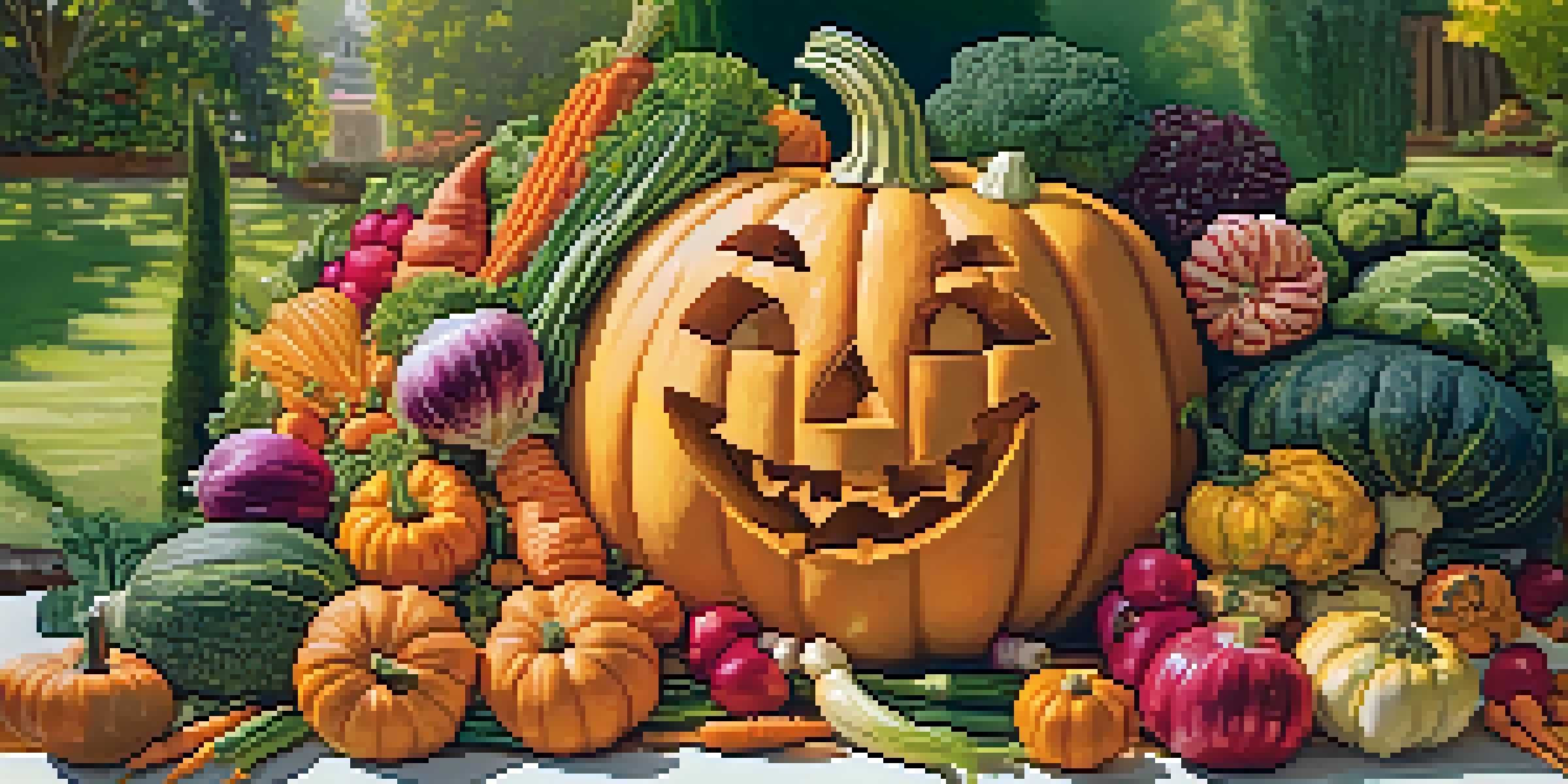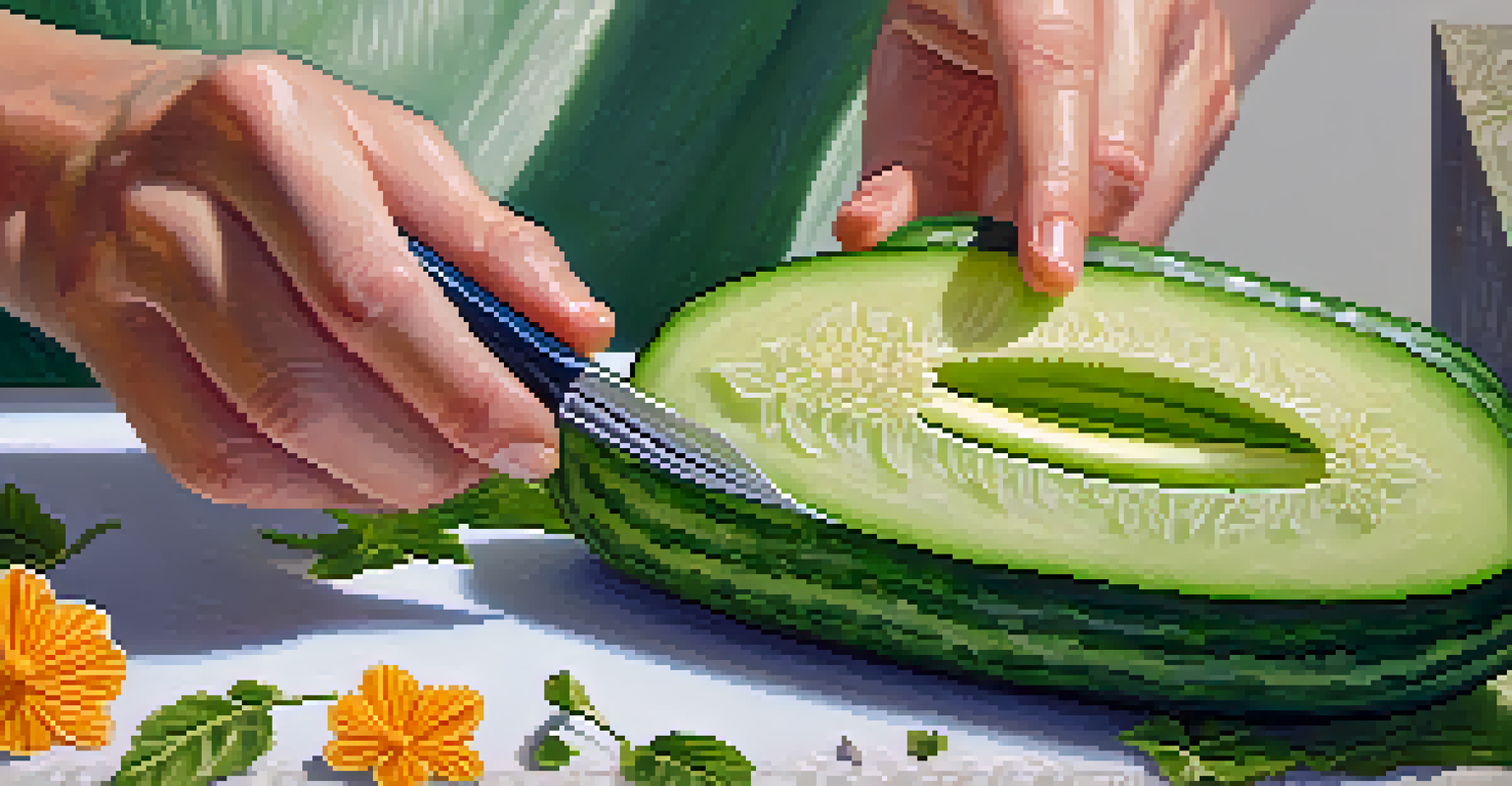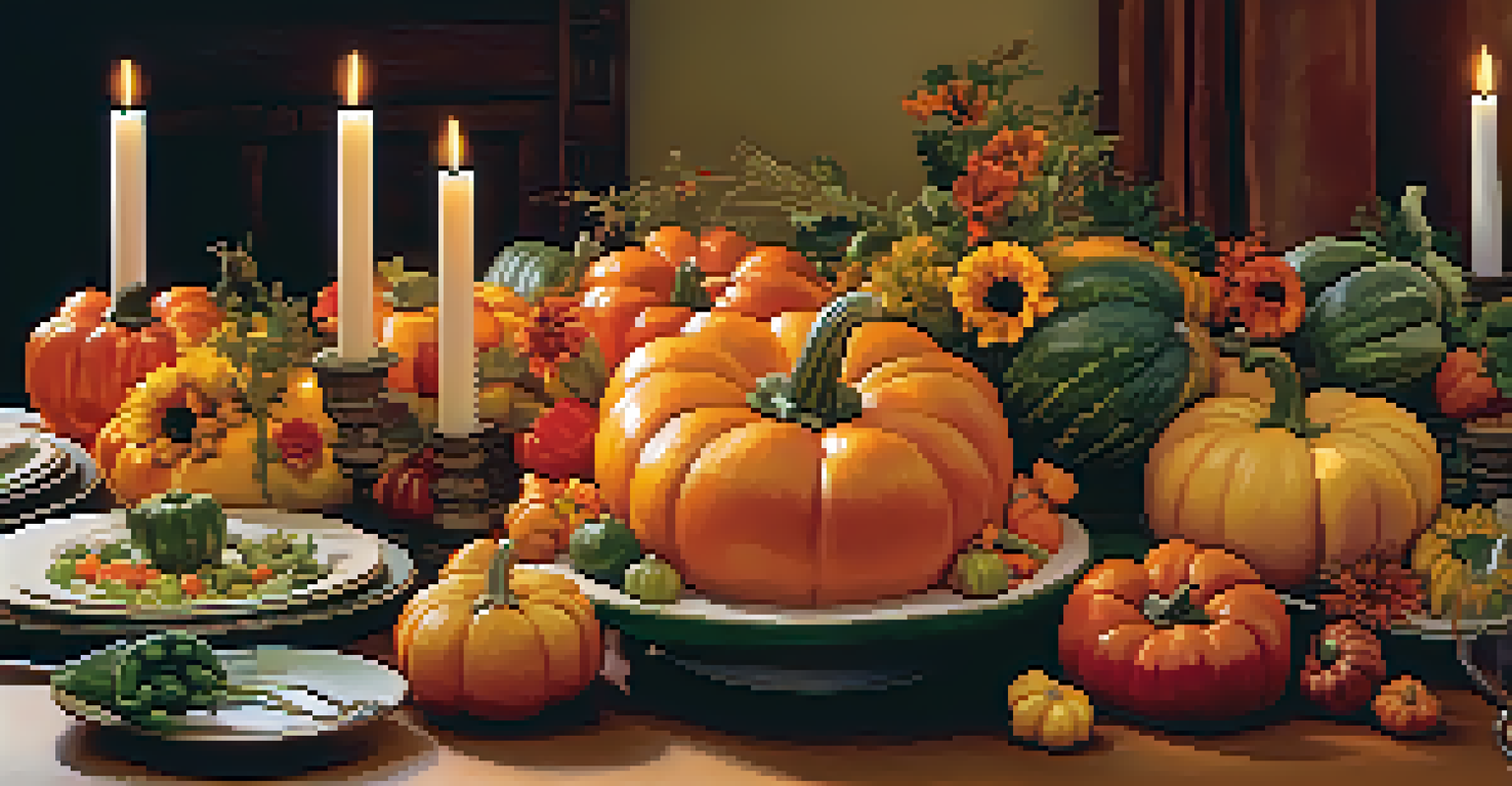Vegetable Carving: Transforming Everyday Produce into Art

What is Vegetable Carving and Why Is It Popular?
Vegetable carving is the art of transforming ordinary produce into intricate designs and sculptures. It has roots in various cultures, particularly in Asia, where it is often used for festive occasions and culinary presentations. The appeal lies in its ability to turn simple ingredients into visually stunning creations that can elevate any dish.
Food is symbolic of love when words are inadequate.
This art form has gained popularity globally, with many showcasing their skills on social media platforms. The vibrant colors and unique shapes of carved vegetables can catch anyone's eye, making it a fantastic way to impress guests at gatherings. Moreover, it promotes creativity and can be a meditative practice for those who enjoy hands-on art.
Vegetable carving is not just about aesthetics; it also encourages people to appreciate the beauty in everyday produce. By engaging in this art, individuals can develop a deeper connection with their food, understanding where it comes from and how it can be transformed into something extraordinary.
Essential Tools for Vegetable Carving Beginners
To get started with vegetable carving, you don’t need an extensive toolkit. A few essential tools can do wonders for your creativity. A sharp knife, a vegetable peeler, and a carving knife are usually enough to begin crafting detailed designs.

Specialty tools, like a melon baller or a garnishing knife, can help create more intricate details and shapes. However, remember that the most important tool is your imagination! Experiment with different fruits and vegetables to see what shapes can emerge from them.
Art Meets Food with Vegetable Carving
Vegetable carving transforms ordinary produce into stunning sculptures, promoting creativity and appreciation for food.
As you progress, you might find that investing in a few more advanced tools can enhance your carving abilities. For instance, a turntable can help you achieve precision with your designs by allowing you to work from different angles without repositioning your vegetable.
Choosing the Right Vegetables for Carving
Not all vegetables are created equal when it comes to carving. The best choices are those with a firm texture and vibrant colors, such as carrots, cucumbers, and radishes. Their sturdy nature allows for more detailed work without falling apart during the process.
Art is not what you see, but what you make others see.
It's also beneficial to consider the size and shape of the vegetable. For beginners, starting with larger items can make it easier to practice your techniques. As you gain confidence, you can move on to smaller, more delicate vegetables like cherry tomatoes or mini bell peppers.
Experimenting with various shapes and textures can lead to delightful surprises. Don’t shy away from trying unique vegetables like zucchinis or squashes, which can also yield beautiful results when carved creatively.
Basic Techniques for Stunning Carvings
When starting out, mastering a few basic techniques can set the foundation for your vegetable carving journey. Simple cuts, such as peeling in a spiral or making flower shapes, can lead to impressive results without overwhelming beginners. It's all about practice and patience.
As you grow more comfortable, you can explore advanced techniques like layering or creating 3D designs. These methods require more skill but can bring your carvings to life, adding depth and dimension that captivates the viewer.
Essential Tools for Beginners
A few basic tools, like sharp knives and a vegetable peeler, are all you need to start creating beautiful designs.
Watching tutorials or following along with experienced carvers can be incredibly helpful. Many artists share tips and tricks that can make complex designs more manageable, allowing you to learn from their expertise and gain confidence in your own abilities.
Creating a Theme for Your Carving Projects
One fun aspect of vegetable carving is the ability to create themed projects. Whether it’s for a holiday, a birthday, or even a dinner party, having a theme can guide your designs and make the process more enjoyable. For example, a Halloween theme could inspire spooky carved pumpkins and ghostly vegetable arrangements.
A themed approach not only adds a personal touch but also encourages creativity. You might find yourself thinking outside the box, experimenting with different vegetables to fit your chosen theme. This can lead to unique designs that tell a story and engage your audience.
Additionally, incorporating seasonal vegetables can enhance your theme. Using fresh produce that represents the time of year can make your carvings feel more relevant and connected to nature, which is a beautiful aspect of this art form.
Showcasing Your Vegetable Carvings
Once you've created your vegetable masterpieces, showcasing them becomes the next exciting step. Whether it's a family gathering or a social media post, sharing your work allows others to appreciate your creativity and can inspire them to try their hand at carving as well. Taking good photographs can really highlight the beauty of your designs.
Consider setting up a dedicated table for your carved vegetables at events, where guests can admire your work and even ask questions. This not only displays your effort but can also spark conversations about food art and creativity.
Benefits Beyond Aesthetics
Engaging in vegetable carving offers relaxation, encourages healthier eating habits, and fosters social connections.
Don’t forget to engage with the online community! Sharing your carvings on platforms like Instagram or Pinterest allows you to connect with fellow enthusiasts, gather feedback, and learn from others. It can be incredibly rewarding to see your art resonate with others and encourage them to explore this fascinating hobby.
The Joy and Benefits of Vegetable Carving
Beyond the visual appeal, vegetable carving offers numerous benefits. It's a fantastic way to unwind and tap into your creative side, providing a break from the hustle and bustle of daily life. The focus required can serve as a form of meditation, helping to clear your mind while you work.
Additionally, engaging in this art form can promote a healthier lifestyle. As you carve and create, you are more likely to consume a variety of vegetables, improving your diet and encouraging others to do the same. It's a great way to combine art and nutrition.

Finally, vegetable carving can be a fun activity to share with friends and family. Hosting a carving night can turn into a delightful bonding experience, sparking laughter and creativity as everyone puts their skills to the test. It's an art that brings people together over a shared love for food and creativity.